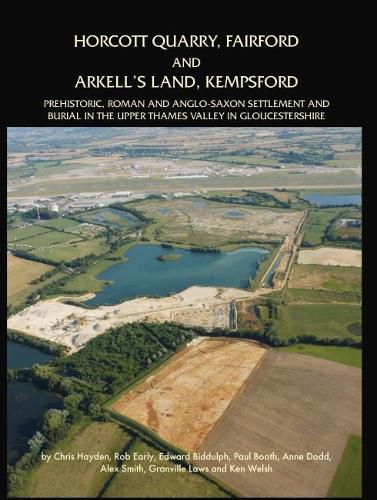Readings Newsletter
Become a Readings Member to make your shopping experience even easier.
Sign in or sign up for free!
You’re not far away from qualifying for FREE standard shipping within Australia
You’ve qualified for FREE standard shipping within Australia
The cart is loading…






Excavations in advance of gravel quarrying in the Upper Thames Valley at Horcott Quarry, Fairford, and nearby Arkell’s Land, Kempsford, revealed contrasting pictures. At Horcott, on the second terrace, there was periodic activity from the early Mesolithic onwards. A major earlier Iron Age settlement contained roundhouses and at least 135 four-post structures, suggesting an exceptional focus on grain storage. An early-middle Roman farmstead incorporated a small stone-founded building, while from c AD 250-350 a large cemetery lay in an adjacent enclosure. Two further groups of burials were contemporary with a substantial Anglo-Saxon settlement including a timber hall and 33 sunken-featured buildings.
By contrast, at Arkell’s Land, on the first gravel terrace, activity on a significant scale only began in the later 1st century AD. It comprised enclosures, field systems and trackways, with the most intensive settlement, as at Horcott, in the middle Roman period. The site was probably linked to an adjacent estate centre at Claydon Pike. There was no post-Roman occupation.
$9.00 standard shipping within Australia
FREE standard shipping within Australia for orders over $100.00
Express & International shipping calculated at checkout
Excavations in advance of gravel quarrying in the Upper Thames Valley at Horcott Quarry, Fairford, and nearby Arkell’s Land, Kempsford, revealed contrasting pictures. At Horcott, on the second terrace, there was periodic activity from the early Mesolithic onwards. A major earlier Iron Age settlement contained roundhouses and at least 135 four-post structures, suggesting an exceptional focus on grain storage. An early-middle Roman farmstead incorporated a small stone-founded building, while from c AD 250-350 a large cemetery lay in an adjacent enclosure. Two further groups of burials were contemporary with a substantial Anglo-Saxon settlement including a timber hall and 33 sunken-featured buildings.
By contrast, at Arkell’s Land, on the first gravel terrace, activity on a significant scale only began in the later 1st century AD. It comprised enclosures, field systems and trackways, with the most intensive settlement, as at Horcott, in the middle Roman period. The site was probably linked to an adjacent estate centre at Claydon Pike. There was no post-Roman occupation.